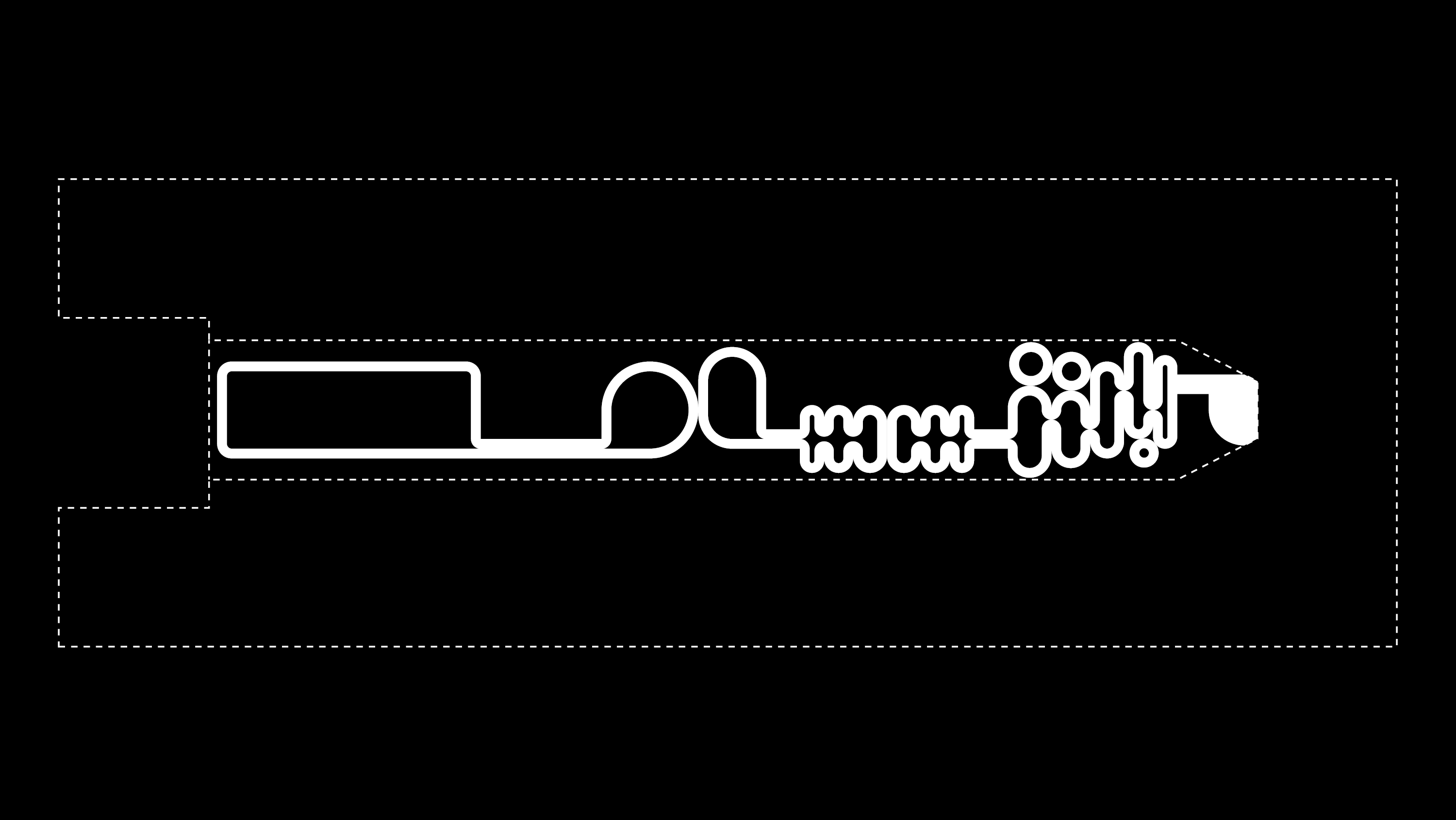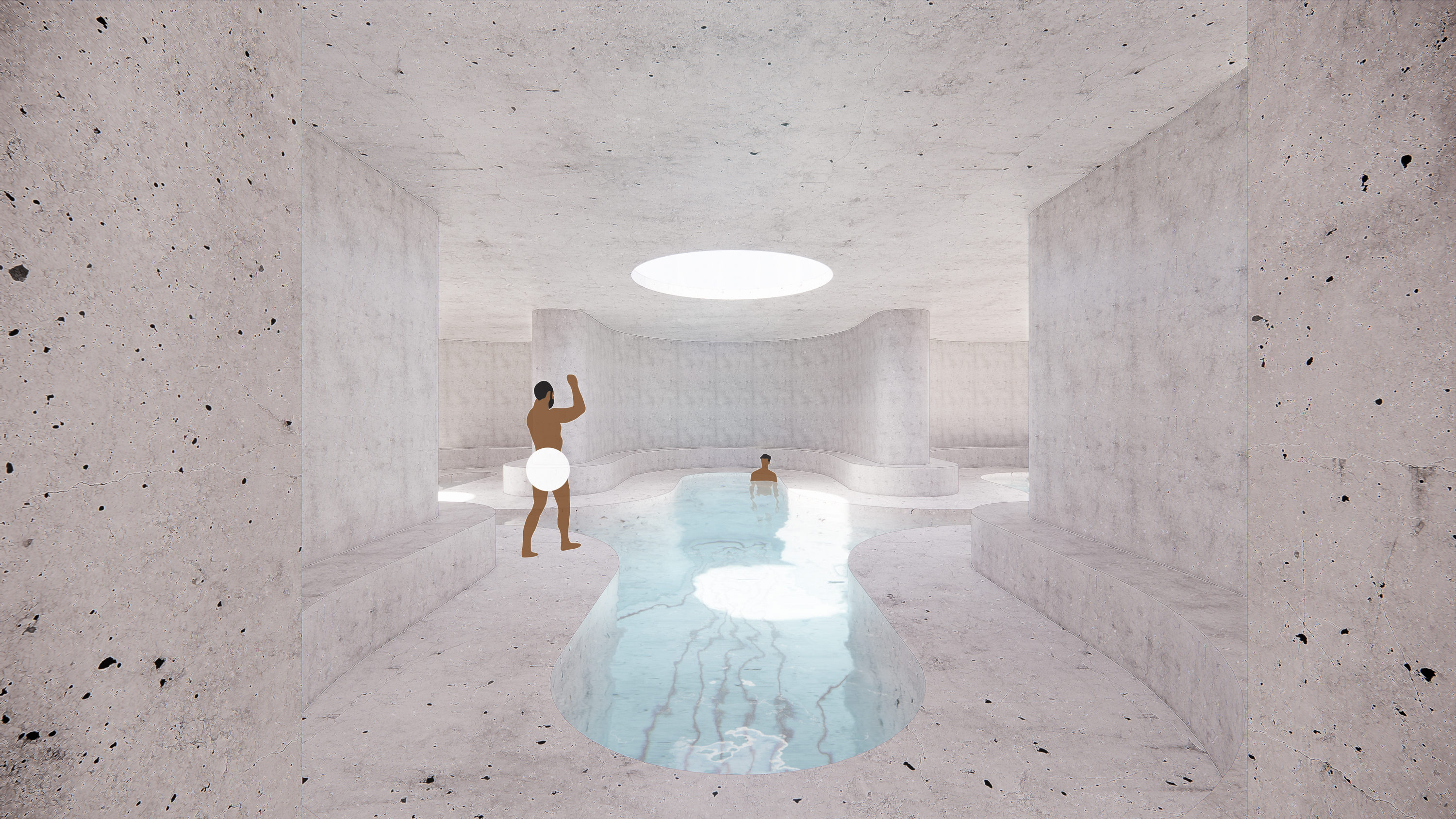
Data Port
_How could we reimagine the data center as a civic amenity?
This project reimagines the data center typology to maximize its ability to shed heat. What would typically be expelled as “waste heat” is repurposed to sponsor a range of civic activities & one of a kind experiences. The site—the only break in the Harbor Walk from its start in Charlestown—is transformed into a destination with a global reach, like the data it houses. Visit the desert. Visit the tropics. Soak up the hot springs. Luxuriate in the thermal baths. Jump on the splash pad. Whoosh down the waterslide. Swim like an olympian. Run like a marathoner. Experience a geyser. Learn about data.
All of these experiences are made possible by the heat from the servers, which literally float across the historic dry dock as a single, meandering row. The pools are used as a heat sink, via a closed loop radiant system—“Direct to Chip Cooling” using non-flammable dielectric fluid—whose flexible piping is set into deep grooves in the flooring & walls of the pools; visible to its users, but out of reach. This technique utilizes the heat-carrying capacity of liquid, which is 3,500 times greater than air, to cool the racks. This is the one time in Architecture where a maximal building envelope is the environmentally friendly, cost-effective choice! Although this approach minimizes the waste heat as air, one can never completely eradicate it, so why not utilize it to inflate a one-hundred-foot tall pneumatic greenhouse? The constancy of the waste air, typically a problem, allows for a monumental gesture on the scale of the Seaport. (And because the structure is year-round, even in the hot months, it raises the question, “What happens when you have too much air?” Answer: you power an artificial geyser as an evaporative cooling homage to the whales.)
All of these experiences are made possible by the heat from the servers, which literally float across the historic dry dock as a single, meandering row. The pools are used as a heat sink, via a closed loop radiant system—“Direct to Chip Cooling” using non-flammable dielectric fluid—whose flexible piping is set into deep grooves in the flooring & walls of the pools; visible to its users, but out of reach. This technique utilizes the heat-carrying capacity of liquid, which is 3,500 times greater than air, to cool the racks. This is the one time in Architecture where a maximal building envelope is the environmentally friendly, cost-effective choice! Although this approach minimizes the waste heat as air, one can never completely eradicate it, so why not utilize it to inflate a one-hundred-foot tall pneumatic greenhouse? The constancy of the waste air, typically a problem, allows for a monumental gesture on the scale of the Seaport. (And because the structure is year-round, even in the hot months, it raises the question, “What happens when you have too much air?” Answer: you power an artificial geyser as an evaporative cooling homage to the whales.)

The data center’s servers float in the former dry dock, releasing waste heat to warm a series of pools and inflate two 100-foot tall pneumatic greenhouses (of course)




The former buoyancy chamber at the center of the dry dock hosts the servers and a series of pools. Greenhouses bracket the pools, and an elevated running track stitches everything together

Soak up the hot springs



Luxuriate in the thermal baths

Jump on the splash pad & whoosh down the waterslide

Swim like an Olympian & experience a geyser

Visit the Tropics!
The continuous waste heat from the servers inflates a pneumatic greenhouse. A running track allows visitors to view the plants from the ground, 40 feet in the air, and everywhere in between

Visit the desert!





A long section through the pools (click it to navigate)




A plan of the pools (click it to navigate)

A view from the museum’s basement through the data center into the swimming pool

Experience the glow of the data
Client
CompetitionTimeline
2021Location
Boston, MassachusettsAward
2021 Rotch Prize WinnerServices
- Architectural Design
-
Interior Design
-
Exhibition Design
- Urban Design